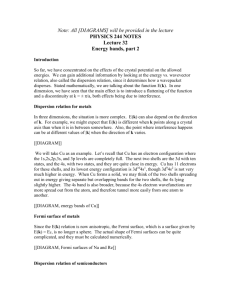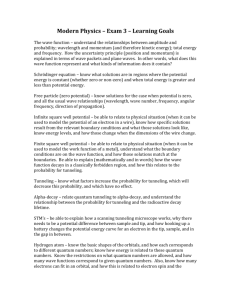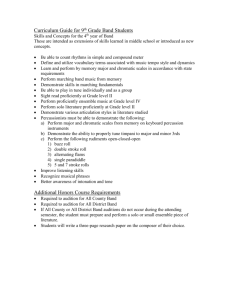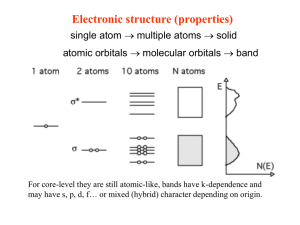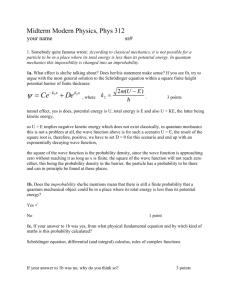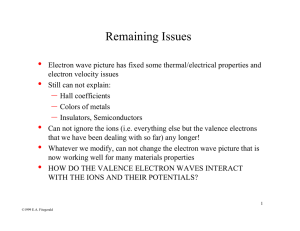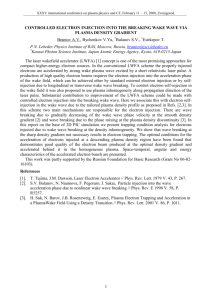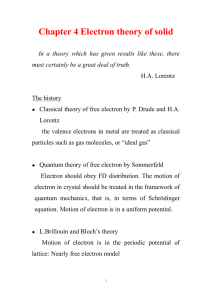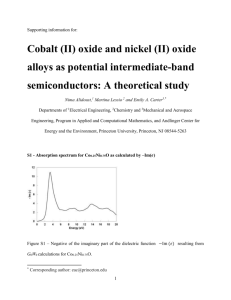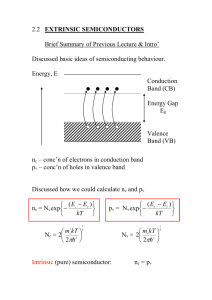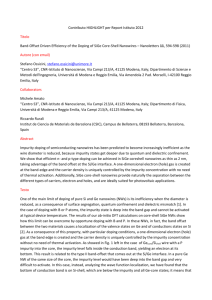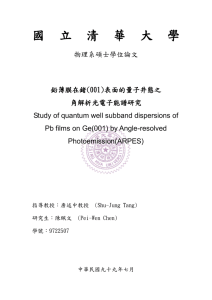MSE 221 Quantum Physics of Materials
advertisement
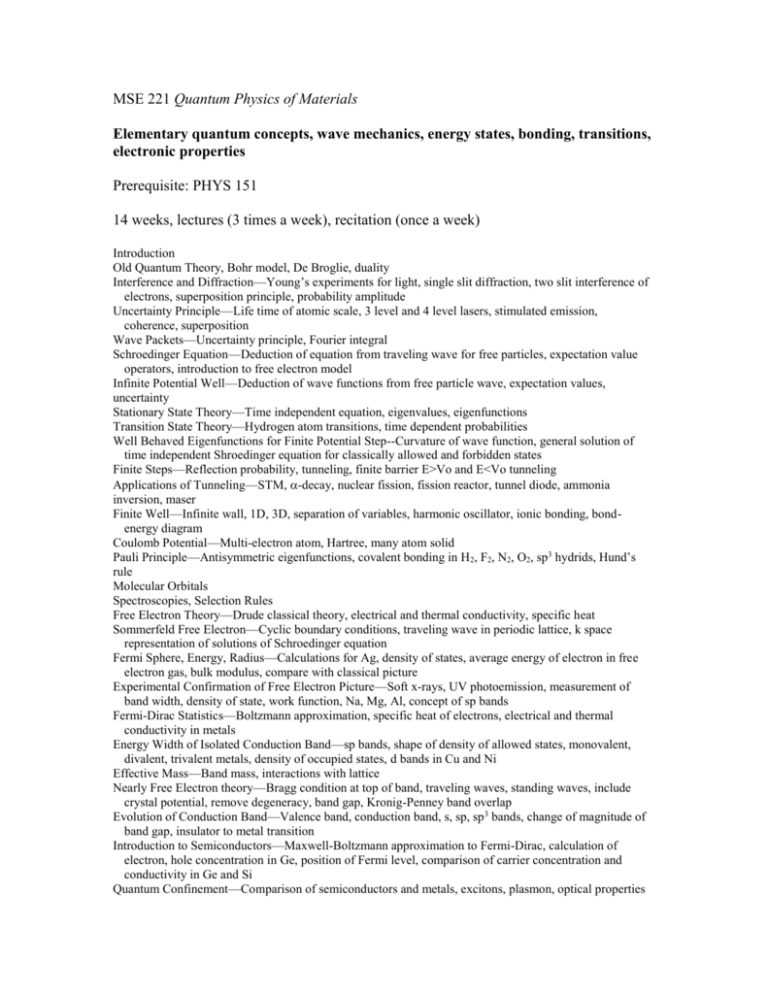
MSE 221 Quantum Physics of Materials Elementary quantum concepts, wave mechanics, energy states, bonding, transitions, electronic properties Prerequisite: PHYS 151 14 weeks, lectures (3 times a week), recitation (once a week) Introduction Old Quantum Theory, Bohr model, De Broglie, duality Interference and Diffraction—Young’s experiments for light, single slit diffraction, two slit interference of electrons, superposition principle, probability amplitude Uncertainty Principle—Life time of atomic scale, 3 level and 4 level lasers, stimulated emission, coherence, superposition Wave Packets—Uncertainty principle, Fourier integral Schroedinger Equation—Deduction of equation from traveling wave for free particles, expectation value operators, introduction to free electron model Infinite Potential Well—Deduction of wave functions from free particle wave, expectation values, uncertainty Stationary State Theory—Time independent equation, eigenvalues, eigenfunctions Transition State Theory—Hydrogen atom transitions, time dependent probabilities Well Behaved Eigenfunctions for Finite Potential Step--Curvature of wave function, general solution of time independent Shroedinger equation for classically allowed and forbidden states Finite Steps—Reflection probability, tunneling, finite barrier E>Vo and E<Vo tunneling Applications of Tunneling—STM, -decay, nuclear fission, fission reactor, tunnel diode, ammonia inversion, maser Finite Well—Infinite wall, 1D, 3D, separation of variables, harmonic oscillator, ionic bonding, bondenergy diagram Coulomb Potential—Multi-electron atom, Hartree, many atom solid Pauli Principle—Antisymmetric eigenfunctions, covalent bonding in H2, F2, N2, O2, sp3 hydrids, Hund’s rule Molecular Orbitals Spectroscopies, Selection Rules Free Electron Theory—Drude classical theory, electrical and thermal conductivity, specific heat Sommerfeld Free Electron—Cyclic boundary conditions, traveling wave in periodic lattice, k space representation of solutions of Schroedinger equation Fermi Sphere, Energy, Radius—Calculations for Ag, density of states, average energy of electron in free electron gas, bulk modulus, compare with classical picture Experimental Confirmation of Free Electron Picture—Soft x-rays, UV photoemission, measurement of band width, density of state, work function, Na, Mg, Al, concept of sp bands Fermi-Dirac Statistics—Boltzmann approximation, specific heat of electrons, electrical and thermal conductivity in metals Energy Width of Isolated Conduction Band—sp bands, shape of density of allowed states, monovalent, divalent, trivalent metals, density of occupied states, d bands in Cu and Ni Effective Mass—Band mass, interactions with lattice Nearly Free Electron theory—Bragg condition at top of band, traveling waves, standing waves, include crystal potential, remove degeneracy, band gap, Kronig-Penney band overlap Evolution of Conduction Band—Valence band, conduction band, s, sp, sp3 bands, change of magnitude of band gap, insulator to metal transition Introduction to Semiconductors—Maxwell-Boltzmann approximation to Fermi-Dirac, calculation of electron, hole concentration in Ge, position of Fermi level, comparison of carrier concentration and conductivity in Ge and Si Quantum Confinement—Comparison of semiconductors and metals, excitons, plasmon, optical properties

